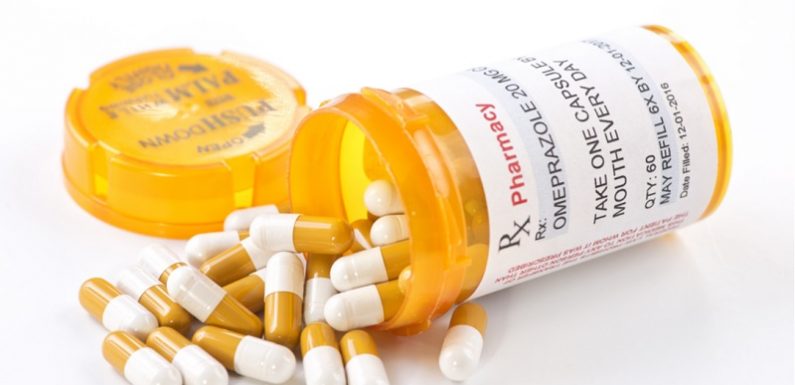
Omeprazole is one of the proton pump inhibitors that decreases the amount of acid produced in the stomach. It’s also taken to prevent and treat conditions such as:
- Gastroesophageal reflux disease (GERD)
- Erosive esophagitis (damage to esophagus caused by stomach acid)
- Gastric ulcers or duodenal ulcers
- Zollinger-Ellison syndrome
- Stomach infections caused by Helicobacter pylori bacteria.
This drug may be used as part of a combination therapy which means it may need to be taken with other medications. For example, omeprazole can also be given together with antibiotics to treat gastric ulcer that is caused by infection of Helicobacter pylori.
How Omeprazole Works?
Omeprazole blocking a system in the cells of your stomach called the proton pump. When the proton pump is blocked, the production of acid in the stomach will be lessened. It functions to decrease the amount of acid in the stomach. It is capable of relieving symptoms such as heartburn, difficulty swallowing and persistent cough.
Omeprazole Side Effects
Common side effects
The common side effects of omeprazole are:
- Headache
- Stomach pain
- Headache
- Nausea
- Diarrhea
- Vomiting
- Fever
If the effects ar mild, they may go away within a days or a couple of weeks.
Serious side effects
Serious side effects and their symptoms are as the following:
- Low magnesium levels. Using this drug for more than three months can cause low magnesium levels. Their symptoms are:
- Seizures
- Abnormal or fast heart rate
- Tremors
- Jitteriness
- Muscle weakness
- Dizziness
- Spasms of your hands and feet
- Muscle cramps or aches
- Spasm of your voice box
- Vitamin B-12 deficiency. Prolonged use of this drug can make it harder for our body to absorb vitamin B-12. Symptoms can include:
- Nervousness
- Neuritis
- Hand and feet numbness or tingling
- Poor muscular coordination
- Changes in menstruation
- Severe diarrhea.
- Inflammation of your stomach lining. Symptoms as follow:
- Stomach pain
- Nausea
- Vomiting
- Weight loss
- Bone fractures
- Kidney damage. Their symptoms are:
- Flank pain (pain in your side and back)
- Changes in urination (colour)
- Cutaneous lupus erythematosus (CLE):
- Skin rashes on the skin and nose
- Raised, red and scaly rash on your body
- Systemic lupus erythematosus (SLE):
- Fever
- Fatigue
- Weight loss
- Blood clots
- Heartburn
- Fundic gland polyps








